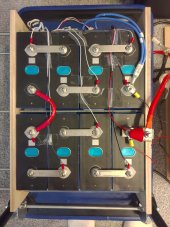Psyckosama
New Member
- Joined
- Oct 6, 2020
- Messages
- 40
Everyone says you should bind your LiFe cells to improve their lifespan. Just wondering it binding them together with a duct tape wrap, or putting pieces of thin plywood wood on each side and then binding them would do it?



